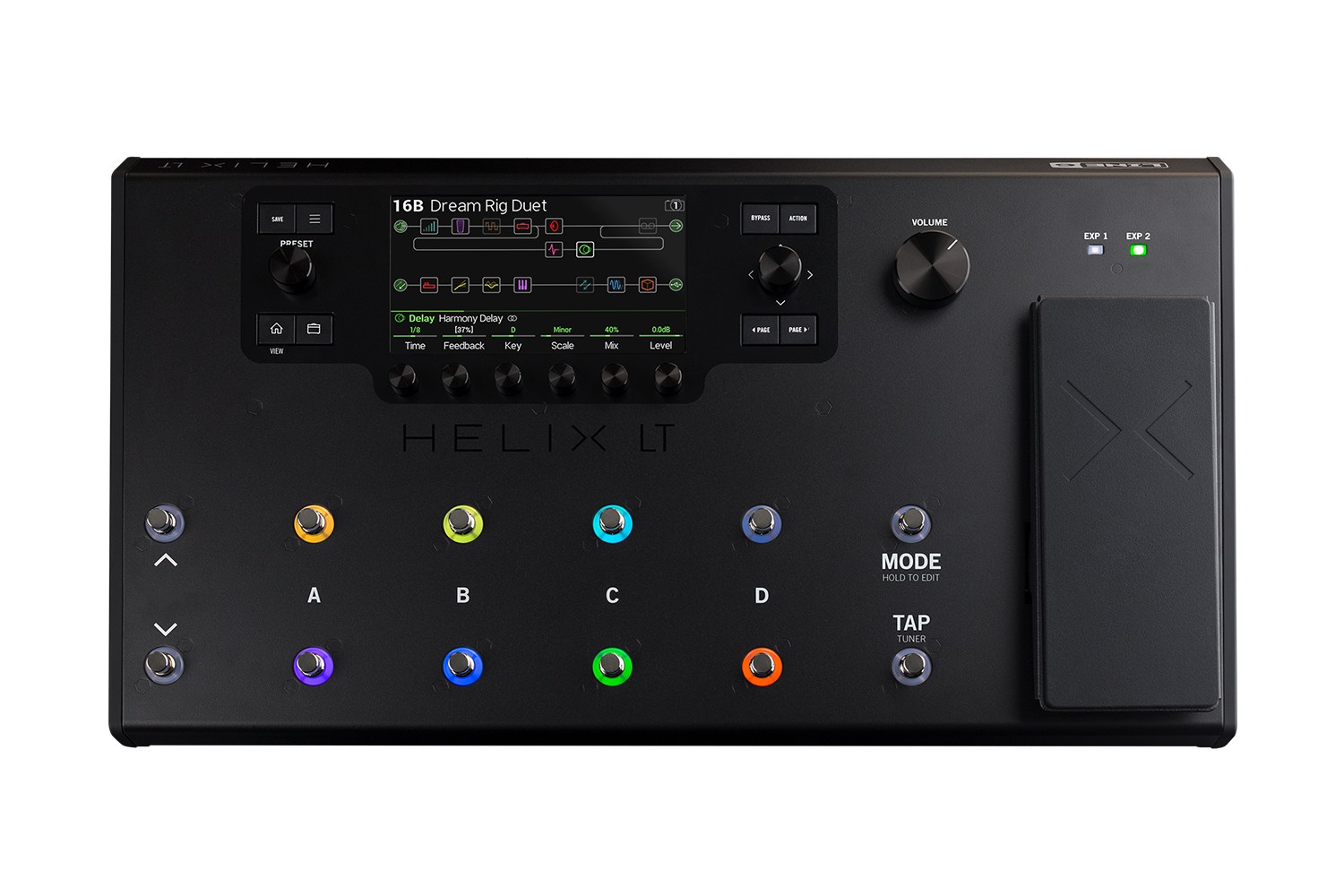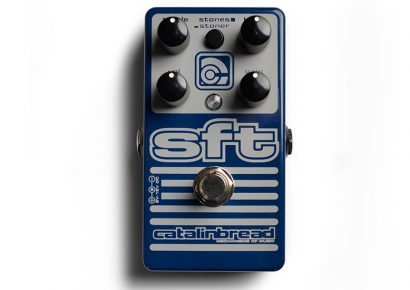Yamaha Music Australia | Enquire for pricing
Once upon a time there were only two truly limitless things: time and space formed the X and Y-axis of all experience. More and more I think we’re starting to reach a point where ‘options on digital modelling units’ could be added as a third Z-axis.
We’ve come a long way from early multi-effects units, which were basically individual pedals sutured together like some cult horror film. The digital age has propelled an exponential expansion not only in the way we think about what’s on our chains, but the scope of their capability. Line 6 was one of the first companies to harness some of the power of possibility and they’ve distilled everything they’ve discovered so far into the new Helix LT.
The Helix family is really Line 6’s pride and joy. It is their most malleable, fastest processing and most true to life sounding iteration and continues to be locked in heated battle with products like AxeFX and Kemper Modelers for best in show. The LT is essentially a lighter, on scale and on budget, version of the original floor and rack units. The processors are all the same, functionality identical and the sounds and their interaction is universal, even to the point of being transferrable from one unit to another should the need arise. It’s just as powerful but the smaller footprint makes it more accessible to different types of players.
My main concern when plugging in this type of unit is the end result. If it doesn’t sound like something I could play in front of people then why waste time? That was much of my issue with many early attempts at the digital smorgasbord. This idea has absolutely been taken into account; even just strolling through the 32 factory presets I found myself lost in sound more than a handful of times. The lengths Line 6 has gone to in presenting all the right sounds to you is incredible. Not only have they modelled classic heads, cabs and mics (you can put a Royer 121 in front of a Marshall Plexi and not bleed money!) but the way that specific capacitors and resistors react to engagement as well.
The internal organs of infamous pedals, from the ultra modern to the mythic, are all inside and this is where Helix takes the lead. It makes a massive difference when the wonky waywardness of a ’60s Univibe colours your trip as opposed to something so linear as 1’s and 0’s.
With all this limitless possibility at play, editing everything into a functional workflow should for all intents and purposes be a nightmare. One of the biggest innovations to combat this has been cross hardware compatibility with laptops and iPads becoming cunning co-conspirators.
In an interesting twist of fate the Helix brings some of that high-definition visibility on board with its full colour LCD display. It’s not quite as instant as a touch screen but it is just as intuitive in the way you dial in parameters, build effects chains and set up set-lists of preset banks relative to which band you’re playing with. Plus there is USB and Variax IOs as well so you don’t miss a thing.
The initial reservations I harboured about digital modelling units continue to dissipate with just about every step forward in the field.
The Helix LT is one of the most user-friendly units I’ve stood before and given that it sounds, and more importantly reacts, like the pedals that peak my purism it’s safe to say that Line 6 have come through with something worth investigating further.
Head to Line 6 for more information. For local enquiries, reach out to Yamaha Music Australia.

